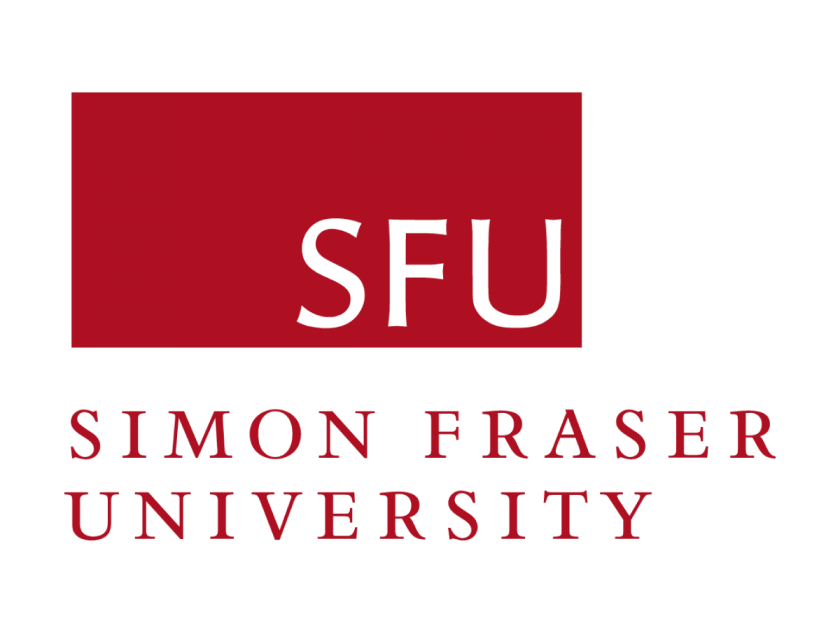Genre Analysis of Law Research Article Abstracts and Application in Legal Writing Teaching
DOI:
https://doi.org/10.54855/paic.2464Keywords:
legal discourse, rhetoric analysis, move-step analysis, research articles’ abstractsAbstract
Investigating the rhetorical structure of law research article (LRA) abstracts is essential for researchers and instructors in legal writing. Despite their significance in academic discourse, the specific rhetorical strategies used in LRA abstracts remain underexplored. This study examines the rhetorical moves in English LRA abstracts using Hyland’s framework. Fifty LRA abstracts, randomly selected from the Journal of East Asia and International Law and Law in Context, both of which are indexed in Scopus and ISI Web of Science, were analyzed as the corpus. The research employed a qualitative content analysis approach to identify and categorize the rhetorical moves. The study reveals that the purpose and introduction moves are the most prevalent, underscoring the importance of clearly stating objectives and establishing context. The product and conclusion move, which summarize key findings and extend research implications, follow in prevalence. In contrast, the method move appears less frequently, reflecting the genre's focus on legislative analysis rather than detailed methodologies. These findings are valuable for law researchers aiming to publish in international law journals and contribute to a broader understanding of genre analysis in legal writing. The study offers practical implications for scholars and educators, enhancing the effectiveness of legal academic communication.References
Abarghooeinezhad, M., & Simin, S. (2015). Analyses of verb tense and voice of research article abstracts in engineering journals. International letters of social and humanistic sciences, 47, 139-152. DOI: https://doi.org/10.18052/www.scipress.com/ILSHS.47.139
Al-Khasawneh, F. M. (2017). A genre analysis of research article abstracts written by native and non-native speakers of English. Journal of Applied Linguistics and Language Research, 4(1), 1-13.
Amnuai, W. (2019). Analyses of rhetorical moves and linguistic realizations in accounting research article abstracts published in international and Thai-based journals. Sage open, 9(1), 2158244018822384. https://doi.org/10.1177/2158244018822384 DOI: https://doi.org/10.1177/2158244018822384
Amnuai, W., & Wannaruk, A. (2013). A Move-Based Analysis of the Conclusion Sections of Research Articles Published in International and Thai Journals. 3L: Southeast Asian Journal of English Language Studies, 19(2), 53-63.
Askehave, I., & Swales, J. M. (2001). Genre identification and communicative purpose: A problem and a possible solution. Applied linguistics, 22(2), 195-212. DOI: https://doi.org/10.1093/applin/22.2.195
Bhatia, V. K. (1993). Analysing Genre – Language Use in Professional Settings. London: Peasron Education Limited.
Bhatia, V. K. (1997). Introduction: Genre analysis and world Englishes. World englishes, 16(3), 313-319. DOI: https://doi.org/10.1111/1467-971X.00066
Cahillane, L., & Schweppe, J. (2016). Legal research methods: principles and practicalities: Clarus Press.
Candarh, D. (2012). A cross-cultural investigation of English and Turkish research article abstracts in educational sciences. Studies about languages (20), 12-17. DOI: https://doi.org/10.5755/j01.sal.0.20.1770
Cane, P., & Kritzer, H. (2012). The Oxford handbook of empirical legal research: OUP Oxford.
Cao, T. H. P. (2018). Move analysis of conference abstracts in applied linguistics: Pedagogical implications into language classrooms. VNU Journal of Foreign Studies, 34(4), 104-114. DOI: https://doi.org/10.25073/2525-2445/vnufs.4284
Do, X. H. (2014). Doi chieu tren co so the loai cau truc tu tu phan dan nhap bai bao nghien cuu tieng Anh va tieng Viet chuyen nganh ngon ngu hoc ung dung [Compare on the basis of genre and rhetorical structure the introduction of English and Vietnamese research articles majoring in applied linguistics]. Can Tho University Science Magazine(33), 1-14.
Do, X. H. (2016a). Tong quan ve cac nghien cuu doi chieu cau truc tu tu trong phan dan nhap bai bao nghien cuu [Overview of studies comparing rhetorical structure in research article introductions]. Can Tho University Science Magazine(44), 88-99. DOI: https://doi.org/10.22144/ctu.jvn.2016.485
Do, X. H. (2016b). Tu tu doi chieu: Mot co so ly thuyet nghien cuu doi chieu ngon ngu o cap do dien ngon [Comparative rhetoric: A theoretical basis for comparative linguistic research at the discourse level]. Can Tho University Science Magazine(43), 19-25.
Hyland, K. (2000). Disciplinary discourses: Social interactions in academic writing. London, UK: Longman.
Ismail, S., & Shah, M. I. A. (2014). A genre analysis of abstracts in Islamic journals. Middle-East Journal of Scientific Research, 20(20), 1.
Gia, T. T. N. (2023, December). An Investigation into the Phenomena of Meaning Making and Wording in Non-Fiction Novel from Systemic Functional Linguistics. In Proceedings of the AsiaCALL International Conference (Vol. 4, pp. 86-103). https://doi.org/10.54855/paic.2347 DOI: https://doi.org/10.54855/paic.2347
Leeuw, F. L., & Schmeets, H. (2016). Empirical legal research: A guidance book for lawyers, legislators and regulators: Edward Elgar Publishing. DOI: https://doi.org/10.4337/9781782549413
Li, Y. (2011). A genre analysis of English and Chinese research article abstracts in linguistics and chemistry. Sciences, 1, 1-14.
Lim, J. M. H. (2006). Method sections of management research articles: A pedagogically motivated qualitative study. English for Specific Purposes, 25(3), 282-309. https://doi.org/10.1016/j.esp.2006.01.002 DOI: https://doi.org/10.1016/j.esp.2005.07.001
Lorés, R. (2004). On RA abstracts: from rhetorical structure to thematic organisation. English for Specific Purposes, 23(3), 280-302. https://doi.org/10.1016/j.esp.2003.06.001 DOI: https://doi.org/10.1016/j.esp.2003.06.001
Marefat, H., & Mohammadzadeh, S. (2013). Genre analysis of literature research article abstracts: A cross-linguistic, cross-cultural study. Studies in Language, 5, 1-20.
McConville, M. (2017). Research methods for law: Edinburgh University Press. DOI: https://doi.org/10.1515/9781474404259
Nguyen, T. T., Hoang, T. T., Pham, D. L., & Phan, T. P. M. (2023, November). The Intercultural Communication Analysis of Conversations in the Project ‘My Hanoi’by Faculty of Tourism, Hanoi Open University. In Proceedings of the AsiaCALL International Conference (Vol. 4, pp. 18-34). https://doi.org/10.54855/paic.2342 DOI: https://doi.org/10.54855/paic.2342
Örücü, E., & Nelken, D. (2007). Comparative law: A handbook: Bloomsbury Publishing.
Paltridge, B. (2007). Approaches to genre in ELT. In International handbook of English language teaching (pp. 931-943): Springer. DOI: https://doi.org/10.1007/978-0-387-46301-8_62
Pham, D. L., Nguyen, T. T., & Phan, T. P. M. (2024). Application of Project-based Learning to Improve the Learning Styles of Tourism Students at Hanoi Open University. Proceedings of the AsiaCALL International Conference, 4, 188–208. https://doi.org/10.54855/paic.23414 DOI: https://doi.org/10.54855/paic.23414
Pho, P. D. (2009). An evaluation of three different approaches to the analysis of research article abstracts. Monash University Linguistics Papers, 6(2), 11-26.
Ruiying, Y., & Allison, D. (2003). Research articles in applied linguistics: Moving from results to conclusions. English for Specific Purposes, 22(4), 365-385. https://doi.org/10.1016/S0889-4906(03)00005-0 DOI: https://doi.org/10.1016/S0889-4906(02)00026-1
Samraj, B. (2005). An exploration of a genre set: Research article abstracts and introductions in two disciplines. English for Specific Purposes, 24(2), 141-156. https://doi.org/10.1016/j.esp.2004.05.001 DOI: https://doi.org/10.1016/j.esp.2002.10.001
Santos, M. B. (1996). The textual organization of research paper abstracts in applied linguistics. Text & Talk, 16(4), 481-500. DOI: https://doi.org/10.1515/text.1.1996.16.4.481
Swales, J. M. (1981). Aspects of article introductions. Birmingham, England: Language Studies Unit, University of Aston.
Swales, J. M. (1990). Genre analysis: English in academic and research settings. UK: Cambridge University Press.
Swales, J. M. (2004). Research genres: Explorations and applications. Cambridge, UK: Cambridge University Press. DOI: https://doi.org/10.1017/CBO9781139524827
Tessuto, G. (2015). Generic structure and rhetorical moves in English-language empirical law research articles: Sites of interdisciplinary and interdiscursive cross-over. English for Specific Purposes, 37, 13-26. doi:10.1016/j.esp.2014.06.002 DOI: https://doi.org/10.1016/j.esp.2014.06.002
Van Bonn, S., & Swales, J. M. (2007). English and French journal abstracts in the language sciences: Three exploratory studies. Journal of English for Academic purposes, 6(2), 93-108. https://doi.org/10.1016/j.jeap.2007.04.001 DOI: https://doi.org/10.1016/j.jeap.2007.04.001
Downloads
Published
How to Cite
Issue
Section
License
Copyright (c) 2024 Nguyen Thi Nhat Linh

This work is licensed under a Creative Commons Attribution 4.0 International License.
Copyright
The copyright of all articles published in the Proceedings of the AsiaCALL International Conference (paic) remains with the Authors, i.e. Authors retain full ownership of their article. Permitted third-party reuse of the open access articles is defined by the applicable Creative Commons (CC) end-user license which is accepted by the Authors upon submission of their paper. All articles in the aicp are published under the CC BY-NC 4.0 license, meaning that end users can freely share an article (i.e. copy and redistribute the material in any medium or format) and adapt it (i.e. remix, transform and build upon the material) on the condition that proper attribution is given (i.e. appropriate credit, a link to the applicable license and an indication if any changes were made; all in such a way that does not suggest that the licensor endorses the user or the use) and the material is only used for non-commercial purposes.









